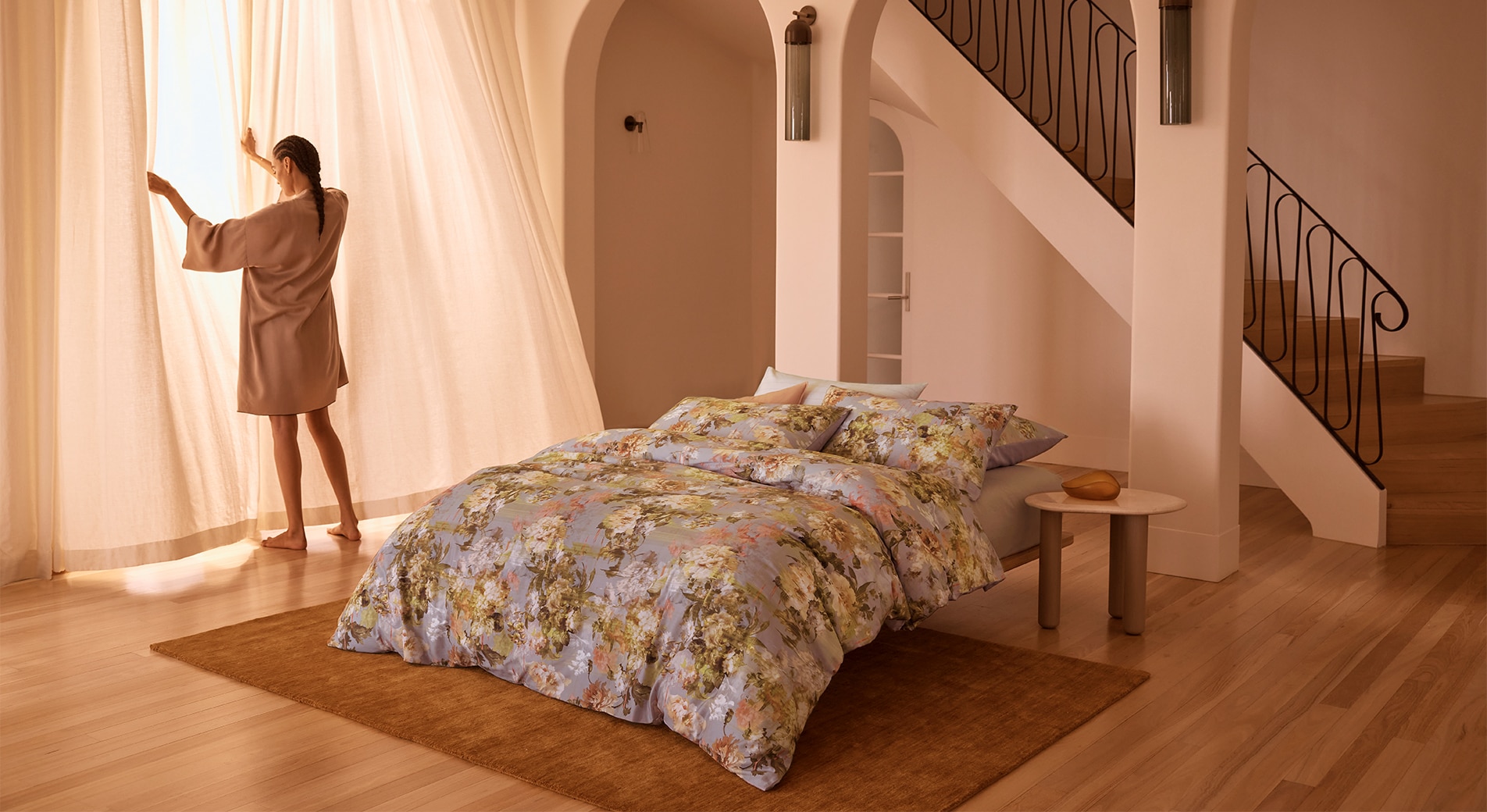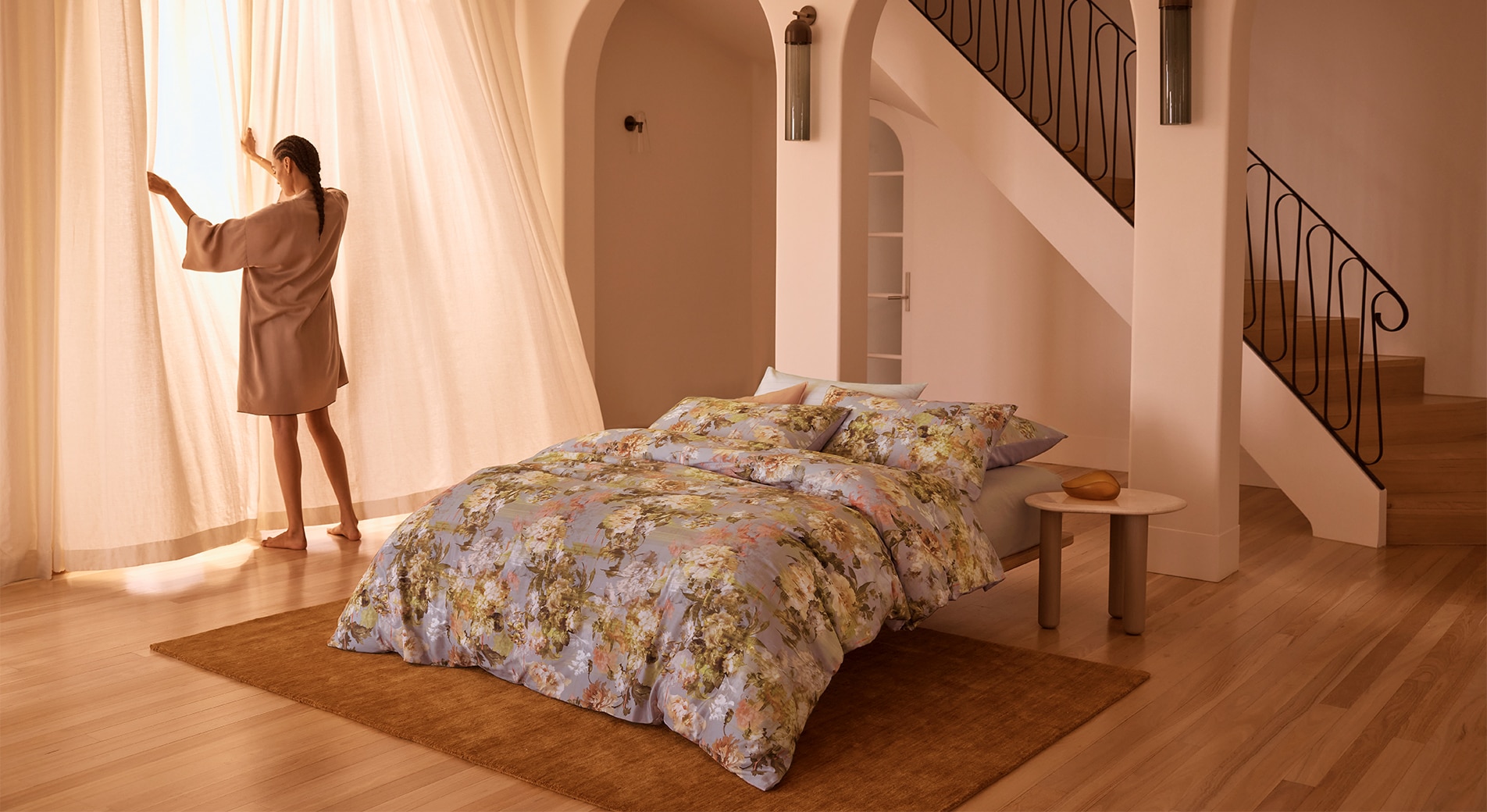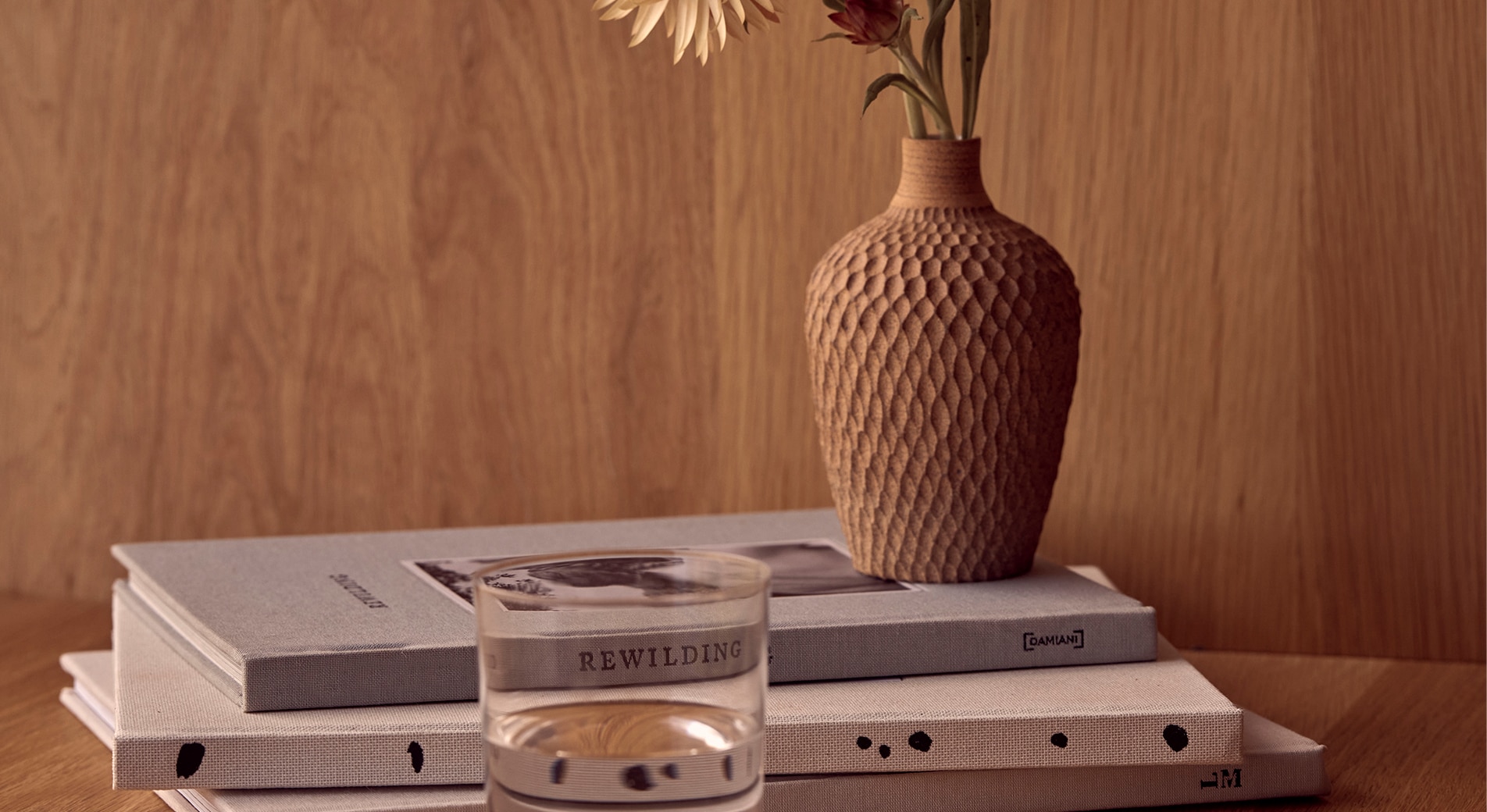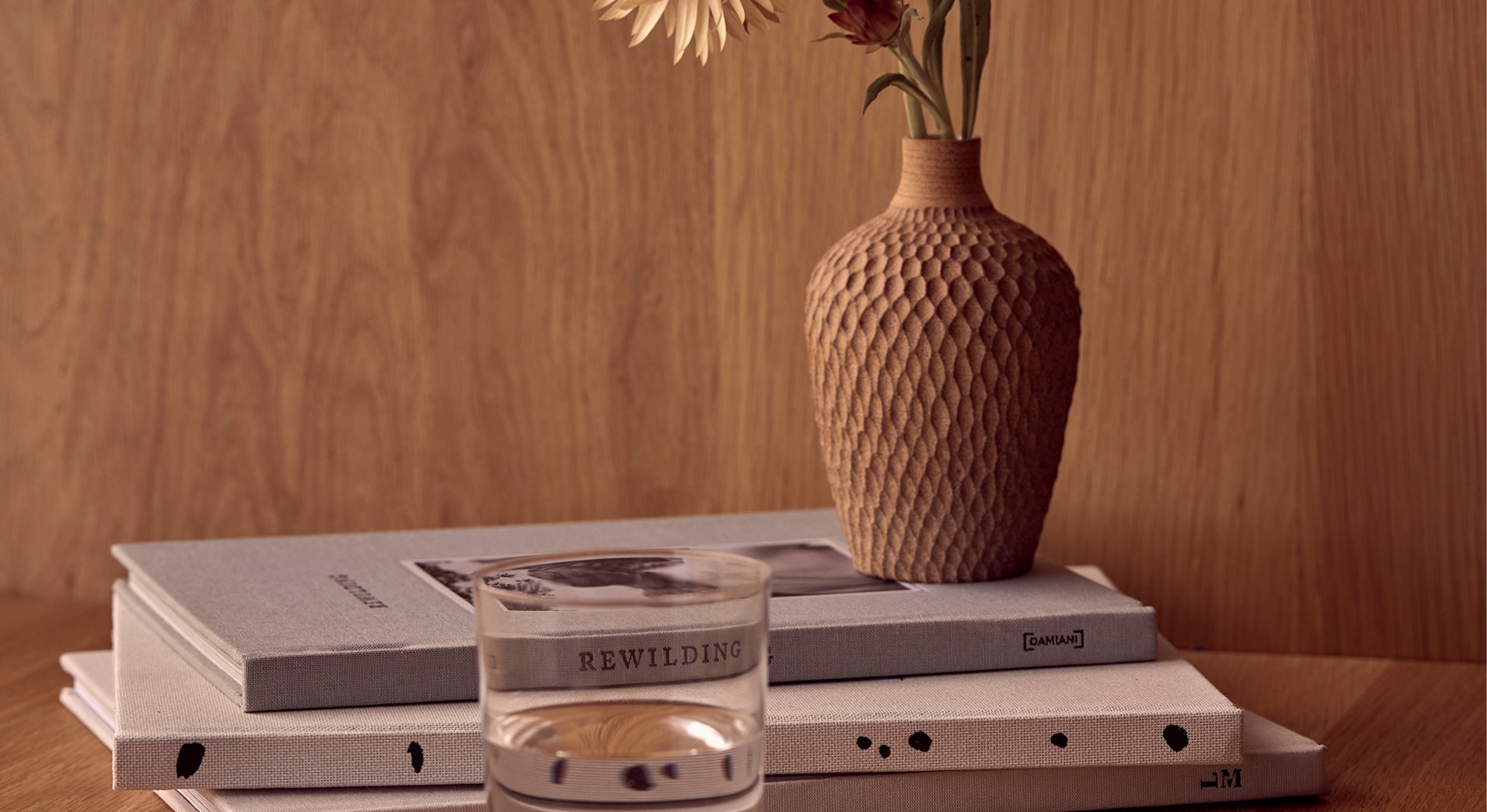How to Create a Calming Bedroom
Are you an introvert, an extrovert or an ambivert?
Regardless of your answer — no matter who you are, or what your personality can be classified under — we all need time to relax. And, more importantly, we need a place to do so. A physical, literal place.
For a lot of us, that place is our home. In fact, Ikea’s Life at Home 2021 report stated that 93% of global consumers think it’s important for their home to provide them with a sense of comfort. People now rely on it as a key pillar in health and wellbeing.
Whether you own your home, rent or lease; live alone, with a partner, with kids, friends or flatmates found on the internet — you can convert your space into a place to retreat.
Now, we’re not saying you have to set up the front door so that when it’s opened, you’re spritzed with fragrant water, or set up one room for tai chi, another for yoga, and another for pilates, or turn every second wall into a green wall — but there are ways to easily put together a comforting and nurturing environment.
You can start with the bathroom for sure, and set up a relaxing bath or shower — but we’d actually recommend paying a lot of attention to the room you spend the most time in. And that’s whether you’re awake or asleep in said room.
That’s right, we’re bringing you a how-to for creating a calming bedroom.
There are a few steps in place - not all need to be taken, and some you might have already done incidentally - or some you might not be allowed to do in your space (ie. painting walls).
When it comes to how to create a calm bedroom, here are the six ways to do so:
1. Start With Colour
2. Incorporate Nature
3. Think About the Decorations
4. Focus on a Multisensory Experience
5. Minimum Electronics
6. Keep it Clean
#1: Start With Colour
Colour therapy, psychology or meaning — there’s no denying the impact that colour can have on everything from an outfit, to a garden, to your bedroom. As founder and principal of the Iris School of Colour Therapy, Suzy Chiazzari, told Vogue Living Australia, “Colour affects our moods and emotions, so it has a profound effect on our thoughts and behaviour.”
As for what’s considered emotionally soothing? Unsurprisingly, Chiazzari reveals its “warm neutrals and pastels.”
Restful, these creams, gentle beiges and soft spiced shades are the perfect starting point for relaxing bedroom ideas. Quilt covers like Henley boast a nutmeg shade, layered with pastels and grounding earth tones — ideal for starting your restful space.
If you really want to commit to relaxing colour, you can go 360º with it — think to the window, to the wall (but not the rest of the lyric, please).


#2: Incorporate Nature
Bring a natural, organic vibe to your bedroom — literally. With plants.
As it turns out, just being in the presence of indoor plants can improve your mental and physical health, and that’s science. They can reduce tension and anxiety by 37% and anger and hostility by 44%.
Research from RMIT found that a few plants of different sizes and varieties within a room leads to “significantly improved wellbeing.” Translation? A calming bedroom how-to pretty much must involve houseplants.
If your thumb is any colour but green, or you’re worried plants won’t be relaxing if you kill every single one of them, do look for something hardier — succulents or a cactus. Devil’s Ivy, a Monstera, a Spider Plant and a Fiddle Leaf Fig are also easy houseplants to take care of.
#3: Think About The Decorations
When you’re on your quest for how to create a relaxing bedroom, it’s still important to think of what you touch, as much as what you see — and with that, we’re talking about textures.
For some, the more the merrier, and for others a subtle touch makes do. Regardless, bringing in soft and sumptuous textiles — velvets, silks, wools and more — add a feeling of cosiness. If you do choose to pile high, layer a mix in — so you practically sink in among the cushions.
Prefer a more stripped-back approach? One or two could be all you need, but to keep it relaxing, choose a colour palette that’s cohesive, and complements. For our Henley Quilt Cover, this could mean bringing in a cushion like Brannen.
#4: Focus on a Multisensory Experience
As any of us know from watching any romcom throughout any period of time, lighting, scent and sound can set the mood. And maybe sometimes that’s the type of mood you want to set in your bedroom — but at all other times, it’s setting up the senses for relaxing.
If you go too dim of a light, you can end up putting strain on your eyes, whereas too bright and white — it’s giving clinical, it’s giving dentist.
So how do you create a calm bedroom in this instance? It’s all about the ambience. Start with the lightbulbs — a warmer, neutral or softer light bulb, for something that’s soothing but still allows you to see. According to the professionals out there, you’re looking for a colour temperature between 2,700-3,000K.
If your lighting situation is more bare bulb hanging from the ceiling than anything nicer, a light-coloured shade can help change the feeling (and make the whole room look a bit better, if we’re being honest).
And creating a scentscape — whether with candles or a diffuser — can also have a pretty powerful impact on your mood. Science backs up the fact that our sense of smell plays an important role when it comes to things like our mood, stress, and even our working capacity.


#5: Minimum Electronics
Sorry team — but you know that creating a relaxing space in your bedroom does not involve having your phone in hand, scrolling endlessly past what should’ve been your bedtime.
There’s the blue light of it all, the addictive aspect of it all, the fact it disrupts your circadian rhythm. Just don’t do it.
If you’re worried about your reliance on it for things like alarms — sometimes, every five minutes so you do actually get out of bed — well, alarm clocks exist for a reason. And we’ve gone so far past them trend-wise, that they’ve circled back around to being considered retro and cool.
If you must must must have your phone in your room, don’t have it within arm's reach of your bed — place it on the other side of the room, so when an alarm does go off, you have to get out of bed to get it. It’s one way to wake up. Also, the do not disturb setting? Use it.
If you’re not a fan of the traditional alarm clock, sunrise alarm clocks have been having their moment for quite some time — waking you up by mimicking the natural rise of the sun in the morning.
In terms of what you should on top of your bedside table? Your emotional support water bottle, a good book, a journal and pen.
#6: Keep it Clean
It can be hard to keep a new year's spring clean going year round — or, more specifically, it can be hard to carve out time for. But sometimes, it’s just something you need to get to, particularly as clutter can affect anxiety levels, sleep and the ability to focus — not exactly conducive to having a calming bedroom.
So if you truly want to know how to create a calm bedroom, pick up and clean up before you go to bed — people who sleep in cluttered rooms are more likely to have sleep problems.
It could be by investing in storage solutions, like the bedframes that allow you to keep the bedding underneath. Or if you’ve got a bed frame with open space underneath, use tubs to keep things neat and tidy — and then a bed skirt to keep said tubs out of sight. Perhaps it’s getting a nice basket for your laundry to go into, as opposed to a pile on the floor. Or a little tray for keeping jewellery and other knickknacks.
You can also invest in keeping your actual bedding cleaner for longer — pillow and mattress protectors are perfect for this.


